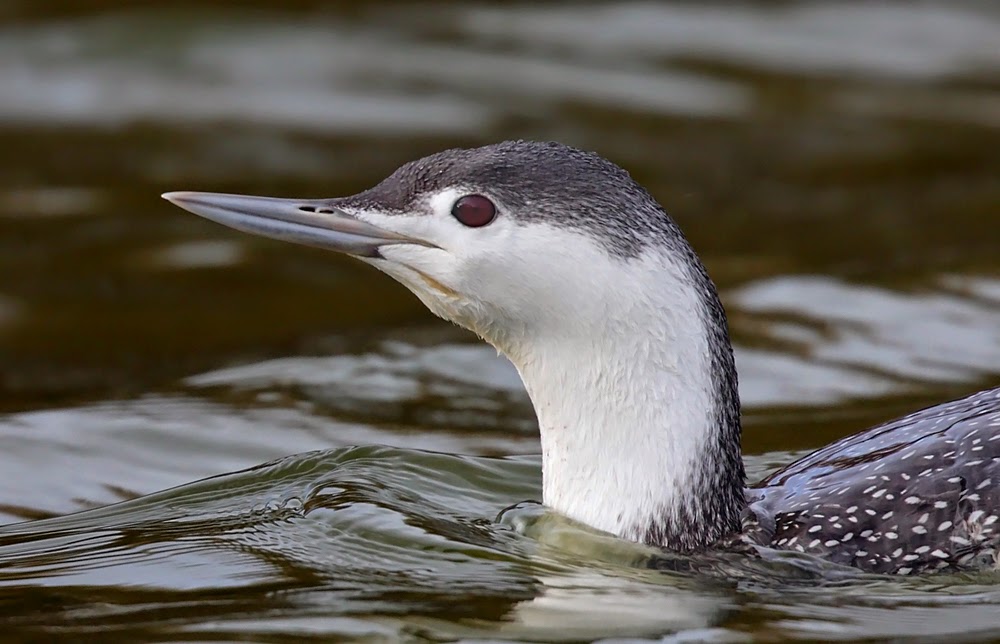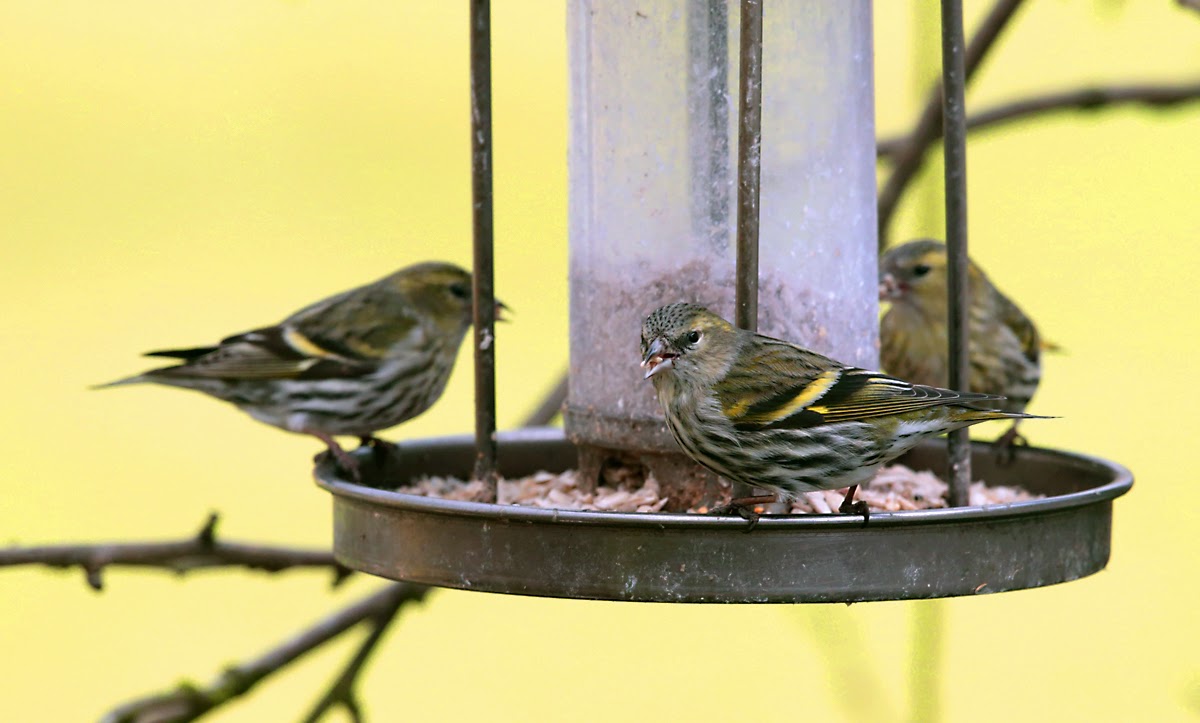Thursday, 19 February 2015
Unexpected visitor
I caught a conversation on my Twitter feed between a couple of local bird watchers. A red-throated diver had been seen on Fairhaven Lake, which is a manmade lake just behind the seawall on the north side of the Ribble Estuary. It picks up a wide variety of rarities, belying its suburban location and use as a park by locals (it's not really a nature reserve, though the RSPB has a presence there - the nearby mudflats, salt marshes, and dunes are also full of birds). Once I'd established it was on the lake, rather than the sea, I decided to go down the next day.
This species is found regularly offshore here, but almost never close to the land. This was the best opportunity I could have hoped for - it was very tame, first floating and preening, then moving to sheltered waters to dive and feed. It would resurface unpredictably, sometimes right in front of the long lenses of photographers camped on the bank (who rather comically ran round the shore as it moved about). The light was better than forecast - grey cloud broke intermittently, and the sun was low and not too contrasty. I left happy.
I wasn't expecting any special birds this month, partly due to an ongoing mobility problem, and partly as it's a bit of a slack month, before the main spring migrations begin. So this was a real treat.
Monday, 9 February 2015
2014 in wildlife: January-June
Above: sanderlings at Rossall Point, Fleetwood, Lancashire
It's been a mixed year. The first half was spent between Scotland and Lancashire, and that's how I expected it to continue. But midsummer health and technology upsets meant I spent almost all the rest of the year at home, and some plans didn't amount to anything. Having said that, I've seen quite a few new bird species, and taken a few photographs. Here's a quick summary of the first six months (I've split the year as there are a lot of pics), garnished with some of my favourite shots.
Above: a male shoveler at Stanley Park, Blackpool; below: siskins in West Lothian.
Having two 'home' locations has many advantages for wildlife spotting, especially when they are as different as these. One coastal, low-lying, with extensive sandy beaches and dunes, mudflats, tidal estuaries, and open farmland nearby; the other hilly, inland, with lots of woods and upland rivers. I also got out to a couple of other locations, Nottingham and London, although the wildlife in these places was of limited, personal interest.
Above: grey wagtails, resident at Stanley Park (winter and spring); below: a female in breeding plumage, West Lothian.
It was a mild and wet winter mostly, with a pretty good spring and plenty of heat in the middle of summer. I was more focused on particular species at particular sites, in addition to my usual wandering. But as ever, luck played a big part in what I saw.
Spring warblers were a target. Above: a willow warbler; below, a chiffchaff, both in Blackpool (IDed based on song, you'll have to take my word for it).
Due to computer problems, I don't have access to the full back catalogue of photos, nor to proper editing, so I've had to cobble together this as best I can. My Flickr feed has a lot of these shots, but I've also tried to find a few unpublished ones on memory cards and rescued from my defunct laptop's hard drive.
Above: Almondell & Calderwood Country Park in West Lothian is a great location. Dippers on the river, bullfinches in the local hedgerows - I've yet to see their kingfishers.
Below: Fleetwood in Lancashire is a surprisingly good place for birds. Rossall Point catches lots of passage migrants, both rare and common (here's one of the latter, a meadow pipit), and proved a good spot for one of my top targets, stonechats (below); while Fleetwood Marsh Nature Park is a hidden gem, packed with good birds, like this wheatear and skylark - so long as you can stand the incessant wind and obnoxious dog walkers.
I mostly attained my goals - I photographed numerous skylarks, including during their song flights, wheatears, finches, and other assorted passerines. Larger birds were less successful, but that's something I can work on in 2015.
Above: it took me years to get a good goldfinch shot. They may be common and widespread, but they are unexpectedly picky about where they land.
Sunday, 1 February 2015
Birds of January
Bird of the month: the elusive but beautiful firecrest.
This year I'll keep track of the total number of bird species I encounter, as well as new ones. Unlike my previous lists, this can include things I see or hear with confidence but don't photograph. It's easier to tot them up monthly, so here's the first tally. My original year target was 150, based on what I've managed before, but given how much progress I've made already, I might raise that later on. I've underlined "lifers", i.e. species I've never seen before.
January 2015
95 species (6 lifers)
Bar-tailed godwit
Barnacle goose
Black-headed gull
Blackbird
Bluetit
Bullfinch
Buzzard
Canada goose
Carrion crow
Cetti's warbler
Chaffinch
Coal tit
Collared dove
Common gull
Coot
Cormorant
Curlew
Dunlin
Dunnock
Eider
Feral pigeon
Fieldfare
Firecrest
Gadwall
Golden plover
Goldcrest
Goldeneye
Goldfinch
Goosander
Great black-backed gull
Great crested grebe
Great grey shrike
Great spotted woodpecker
Great tit
Greenfinch
Grey heron
Grey plover
Grey wagtail
Greylag goose
Herring gull
House sparrow
Iceland gull
Jackdaw
Kestrel
Lapwing
Lesser black-backed gull
Linnet
Little egret
Little grebe
Long-tailed tit
Long-eared owl
Magpie
Mallard
Meadow pipit
Mediterranean gull
Merlin
Mistle thrush
Moorhen
Mute swan
Oystercatcher
Peregrine
Pheasant
Pied wagtail
Pink-footed goose
Pintail
Pochard
Purple sandpiper
Red-legged partridge
Redshank
Reed bunting
Ringed plover
Robin
Rook
Sanderling
Shelduck
Shorelark
Shoveler
Skylark
Snipe
Sparrowhawk
Starling
Stonechat
Teal
Tree sparrow
Treecreeper
Tufted duck
Turnstone
Twite
Water rail
Whooper swan
Wigeon
Woodcock
Woodpigeon
Wren
Yellowhammer
Runners up: flocks of twite livening up the saltmarshes.
Subscribe to:
Posts (Atom)




























